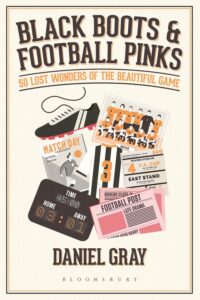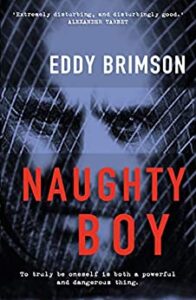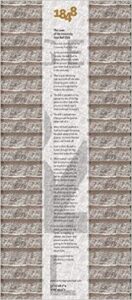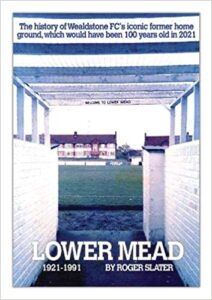Book Review: The Great Football Conspiracy: A comedy thriller novel by Jonathan Last
 On 18 April 2021 the football world went into meltdown when 12 clubs (AC Milan, Arsenal, Atletico Madrid, Barcelona, Chelsea, Inter Milan, Juventus, Liverpool, Manchester City, Manchester United, Tottenham Hotspur and Real Madrid) announced the creation of a European Super League (ESL). There was a universal outcry from FIFA and UEFA, clubs, governments, the media and fans, who saw what the ESL for what it was, a closed shop for those invited, who perceived themselves as the ‘biggest’ clubs, motivated not by the interests of the global game but by greed. The opposition was so vociferous that within three days, only Barcelona, Juventus and Real Madrid remained still in support of the project. What it showed was that there was a widespread belief that the ESL went against the integrity of the game, and that fans still had a part in making their views know in affecting decisions.
On 18 April 2021 the football world went into meltdown when 12 clubs (AC Milan, Arsenal, Atletico Madrid, Barcelona, Chelsea, Inter Milan, Juventus, Liverpool, Manchester City, Manchester United, Tottenham Hotspur and Real Madrid) announced the creation of a European Super League (ESL). There was a universal outcry from FIFA and UEFA, clubs, governments, the media and fans, who saw what the ESL for what it was, a closed shop for those invited, who perceived themselves as the ‘biggest’ clubs, motivated not by the interests of the global game but by greed. The opposition was so vociferous that within three days, only Barcelona, Juventus and Real Madrid remained still in support of the project. What it showed was that there was a widespread belief that the ESL went against the integrity of the game, and that fans still had a part in making their views know in affecting decisions.
You may well be thinking what has got to do with Jonathan Last’s book, The Great Football Conspiracy? Well the premise of this, sub-titled, A comedy thriller novel, is centred around a plot that looks to change the game and its principles forever – sound familiar! The books synopsis details that it is ‘The Da Vinci Code’ meets ‘Fever Pitch’, no small claim indeed, given Dan Brown’s thriller has sold over 80 million copies worldwide and Nick Hornby’s seminal book on Arsenal has sold over a million copies in the UK alone and spawned two films.
In reality, where this book has similarities to The Da Vinci Code is that the central characters in both novels try to solve a number of clues as they race around various locations. For the cities of Europe in Dan Brown’s book, read a number of London football stadiums including Chelsea, Fulham, QPR and Wembley. Last obviously knows his venues as his descriptions of these grounds will be familiar to those fans who call them home. Another similarity between the two is also in respect of the characters and trying to work out as a reader which can be trusted as the ‘good guys’.
The links to Hornby’s Fever Pitch are less obvious, given it is biographical rather than fiction. However, Last does display throughout The Great Football Conspiracy an understanding and knowledge of the game, its history and what it is to be a fan.
Yes there is humour within the book and yes it has the feeling of a thriller, but at the heart of it is a message about the importance of fans and their part in the traditions of the game. The ESL project has shown that there is and perhaps always be a threat to football, but it would be good to think that as The Great Football Conspiracy shows there will always be custodians of the game, whether administrators or fans, who will uphold the integrity of what is and should always be, The People’s Game.
(Independently Published. November 202. Paperback 297pages)
 The first question that many people will ask in first picking up this book is, ‘who is Andrew Watson?’ Author Llew Walker addresses this in the Preface to this well researched and diverse read, with the following:
The first question that many people will ask in first picking up this book is, ‘who is Andrew Watson?’ Author Llew Walker addresses this in the Preface to this well researched and diverse read, with the following:

 I have already waxed lyrical (twice!) about Daniel Gray’s football books on this site (
I have already waxed lyrical (twice!) about Daniel Gray’s football books on this site ( Eddy Brimson is a talented boy.
Eddy Brimson is a talented boy.


 This book from Steven Penny was born out of his record of matches he attended during the 2002/03 season, documented on his website
This book from Steven Penny was born out of his record of matches he attended during the 2002/03 season, documented on his website  When this review was written in March 2021, Kenny Ross held the positions of Chairman of the Dundee FC Supporters Association and Official Club historian. These posts and his support for the Dens Park club since childhood has seen his love and knowledge for his beloved Dark Blues produce a number of books including, Dundee: Champions of Scotland 1961-62, Dundee FC On This Day: History, Facts & Figures from Every Day of the Year, Dundee Legends and Dundee’s Hampden Heroes. Additionally he was co-author with Jacqui Robertson for,
When this review was written in March 2021, Kenny Ross held the positions of Chairman of the Dundee FC Supporters Association and Official Club historian. These posts and his support for the Dens Park club since childhood has seen his love and knowledge for his beloved Dark Blues produce a number of books including, Dundee: Champions of Scotland 1961-62, Dundee FC On This Day: History, Facts & Figures from Every Day of the Year, Dundee Legends and Dundee’s Hampden Heroes. Additionally he was co-author with Jacqui Robertson for,